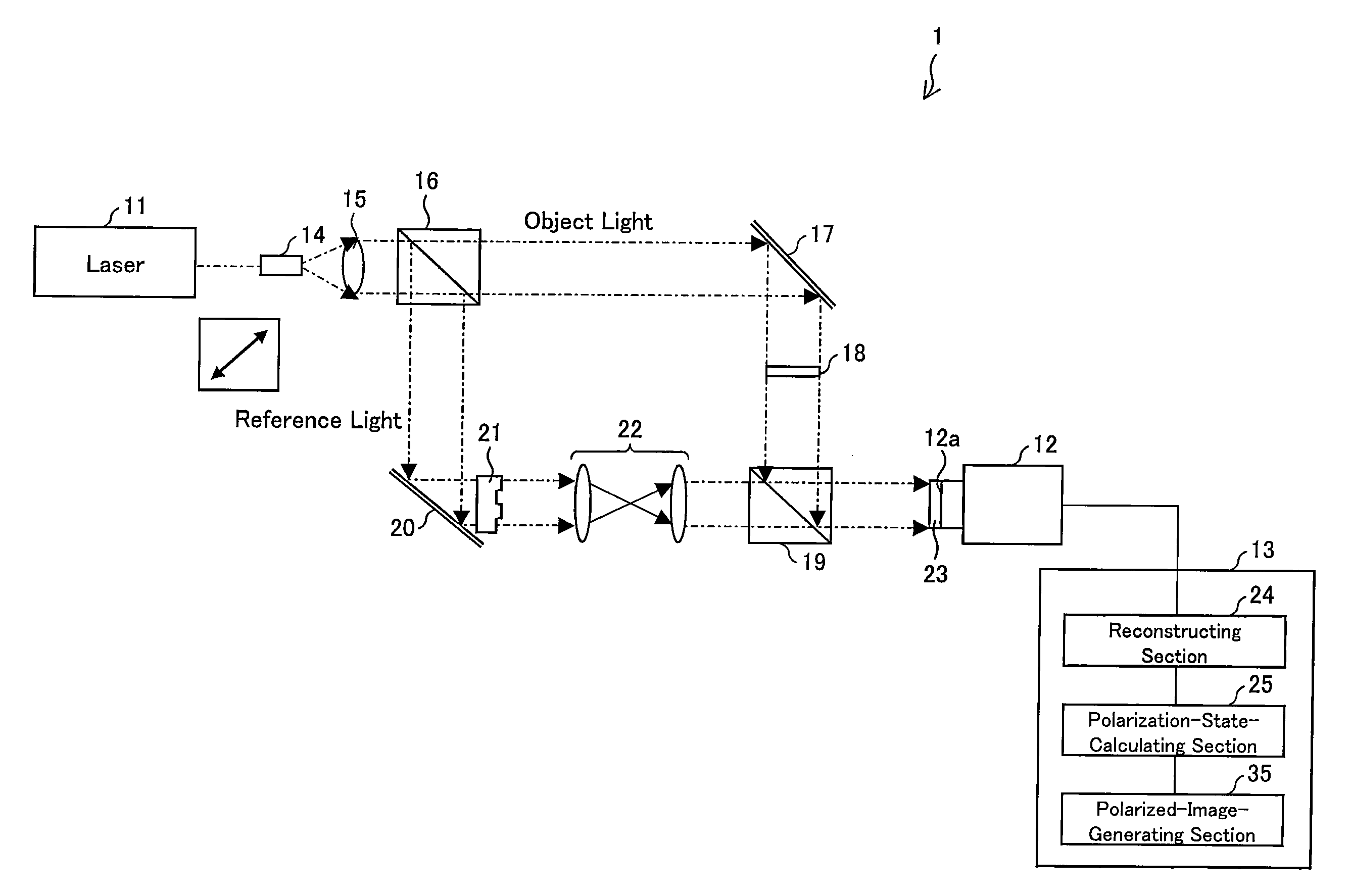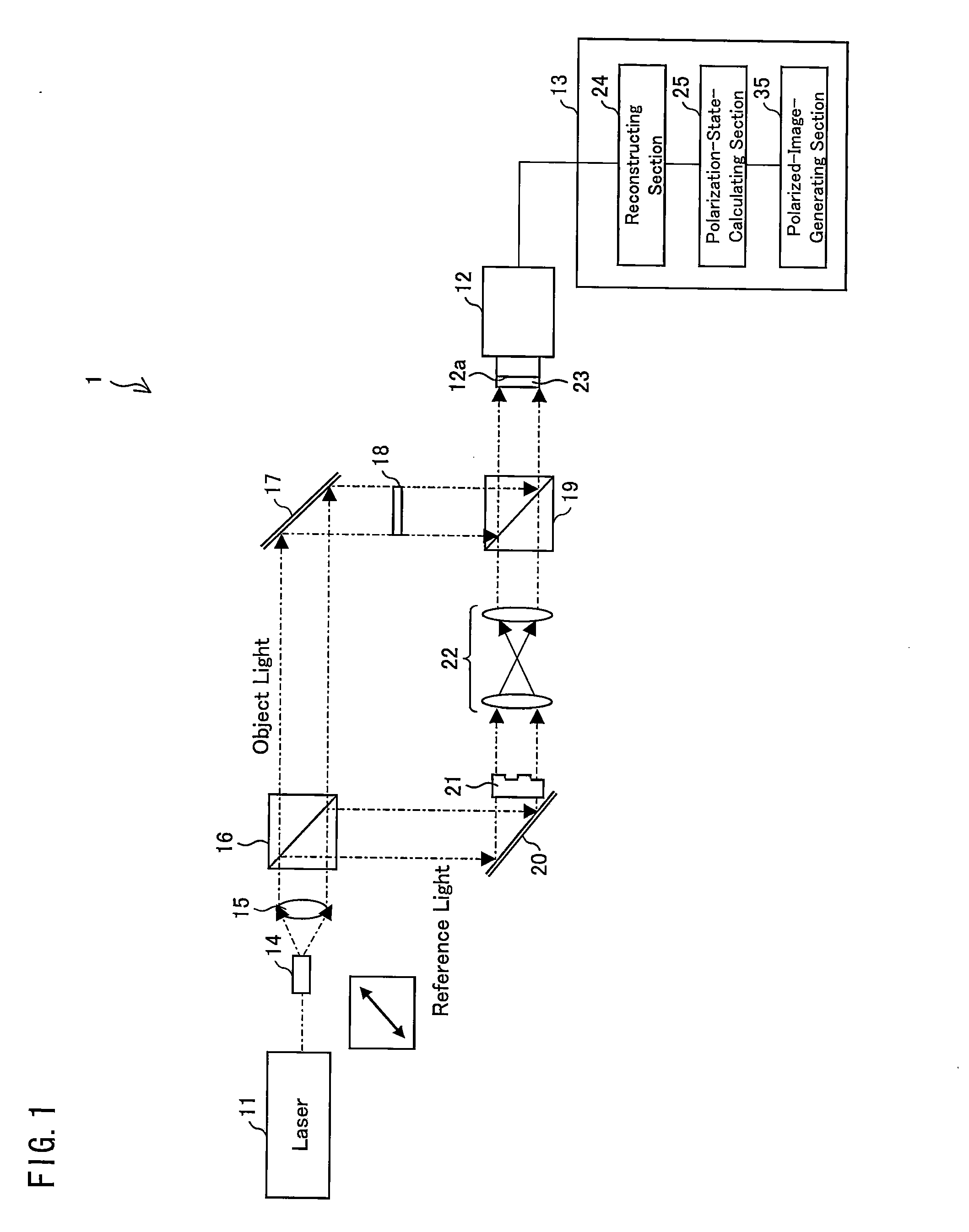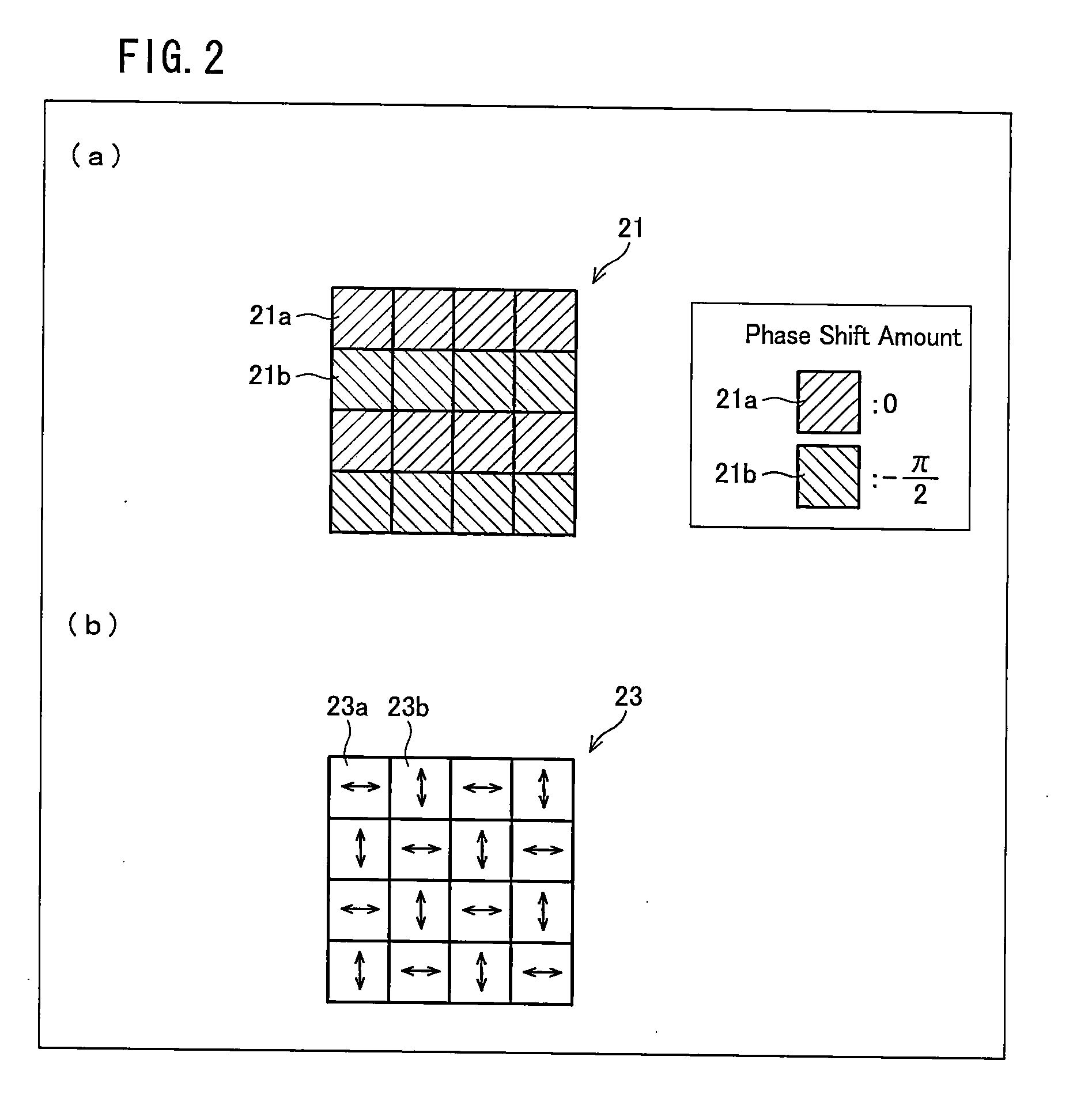Method and apparatus for polarization imaging
a polarization imaging and apparatus technology, applied in the field of polarization imaging apparatus, can solve the problems of inability to realize the imaging of an instantaneous three-dimensional structure, take a long time to complete, and it is difficult to observe the changes in chemical structure over time at different depth positions
- Summary
- Abstract
- Description
- Claims
- Application Information
AI Technical Summary
Benefits of technology
Problems solved by technology
Method used
Image
Examples
embodiment 1
[0109]The following discusses in detail Embodiment 1, with reference to FIGS. 1 through 8. In Embodiment 1, the number of light sources is 1; in regard to reference light, the number of light components polarized in different directions is 2; and in regard to light components polarized in first and second directions, the number of different phases is 2.
[0110]FIG. 1 is a view schematically illustrating a polarization imaging apparatus 1 according to Embodiment 1 of the present invention. The polarization imaging apparatus 1 includes an image pickup device including an optical system provided with a laser light source (light source) 11 and an image pickup element (image pickup section) 12. The image pickup element 12 has an image pickup plane 12a which is made of a CCD. Further, the polarization imaging apparatus 1 includes a computer 13 connected to an output of the image pickup element 12. The image pickup element 12 has a polarizer-array device 23 disposed in front of the image pic...
embodiment 2
[0147]The following discusses in detail Embodiment 2 with reference to FIGS. 9 and 10. In Embodiment 2, the number of light sources is 1; in regard to reference light, the number of light components polarized in different directions is 2; and in regard to light components polarized in first and second directions, the number of different phases is 2. For convenience, members and configurations having the same functions as those discussed in Embodiment 1 are given identical reference signs and only explanations of differences from Embodiment 1 are given below.
[0148]FIG. 9 is a view schematically illustrating a configuration of a polarization imaging apparatus 2 according to Embodiment 2. The polarization imaging apparatus 2 includes a laser light source 11. The laser light source 11 emits linearly-polarized laser light that includes a light component polarized in the second direction (vertical direction). The polarization imaging apparatus 2 includes a ½ wave plate 36 that regulates a...
embodiment 3
[0167]The following discusses in detail Embodiment 3 with reference to FIG. 11. In Embodiment 3, the number of light sources is 1; in regard to reference light, the number of light components polarized in different directions is 2; and in regard to light components polarized in first and second directions, the number of different phases 2. For convenience, members and configurations having the same functions as those discussed in Embodiment 1 are given identical reference signs and only explanations of differences from Embodiment 1 are given below. Embodiment 3 discusses application to a polarization microscope that is suitably used for observation of living samples such as cells.
[0168]FIG. 11 is a view schematically illustrating a configuration of a polarization imaging apparatus 3 of Embodiment 3 of the present invention. A laser light source 11 of the polarization imaging apparatus 3 emits laser light in a polarization direction that is inclined at 45° relative to a first directi...
PUM
 Login to View More
Login to View More Abstract
Description
Claims
Application Information
 Login to View More
Login to View More - R&D
- Intellectual Property
- Life Sciences
- Materials
- Tech Scout
- Unparalleled Data Quality
- Higher Quality Content
- 60% Fewer Hallucinations
Browse by: Latest US Patents, China's latest patents, Technical Efficacy Thesaurus, Application Domain, Technology Topic, Popular Technical Reports.
© 2025 PatSnap. All rights reserved.Legal|Privacy policy|Modern Slavery Act Transparency Statement|Sitemap|About US| Contact US: help@patsnap.com



